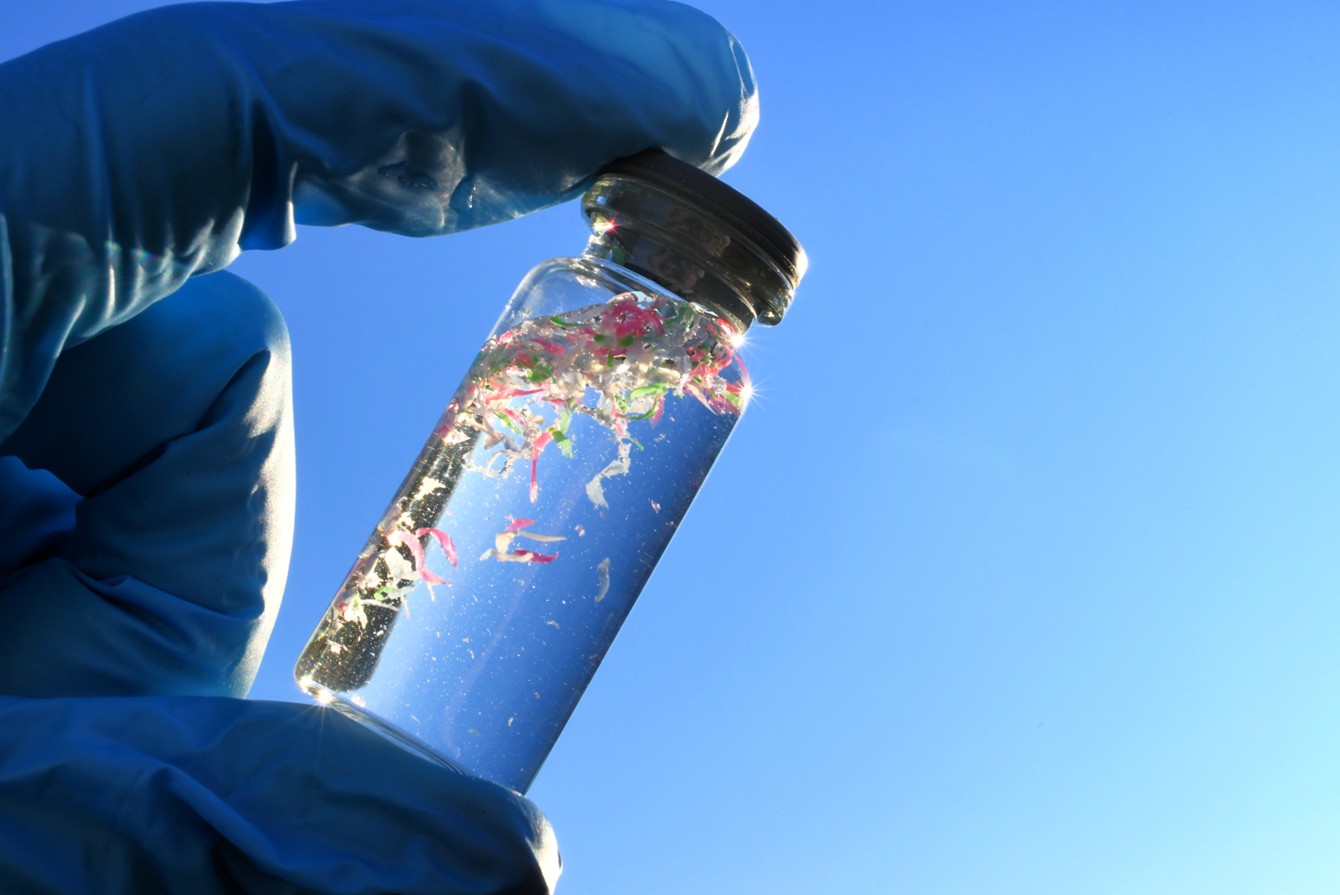Lysis and Extraction
Without Bias and Inhibition
There’s a classic joke about a man searching for his lost keys under a streetlight. When asked if that’s where he lost them, he says no — but that’s where the light is. In microbiome research, this same logic plays out more often than we’d like to admit. The microbes we detect — and the ones we think are most abundant — are often those that are easiest to lyse and extract DNA from. The streetlight, in this case, is cast by our methods. Gram-negative bacteria with fragile membranes light up clearly, while tougher, slower-to-lyse organisms remain hidden in the dark. This issue of microbial dark matter is not new to microbiology; it has existed in various forms throughout the history of the field starting with microbes too small to resolve with early microscopes and continued to microbes known to be “viable but not culturable.” Without realizing it, we’re building conclusions on what’s easiest to see and analyze — not necessarily what’s actually there.

Bias Isn’t Random:
Why Lysis Skews, Not Scatters
In any scientific workflow, it’s natural to expect some amount of noise — random variation from pipetting, sequencing depth, or sampling error. But lysis-induced bias isn’t random. It systematically favors certain types of microbes over others, particularly those that are easier to break open and extract DNA from. The effects of these biases are particularly insidious in how they play out during bioinformatic analysis where many processes, such as normalization between samples with different read depths, assume that the reads are randomly distributed among what is present without strong biases towards one taxon or another.
An example of this difference would be the effects of removing 10% of reads from a study at random vs. the effects of removing the 10% of reads with the highest GC content. The random removal would undoubtedly weaken conclusions, increase uncertainty and error bars, and may even result in one or more taxa that were previously identified as rare becoming fully undetectable. The overall results and conclusion would not likely change other than becoming a little weaker with higher uncertainty and worse statistical significance. The removal of specifically high-GC reads would generate specific biases against microbes with high GC content as well as against regions in any microbe with high GC content, both highly biasing changes to our result.
While random error adds uncertainty, bias reshapes the entire picture in a predictable — and misleading — way. If tough-to-lyse Gram-positive bacteria aren’t cracked open at a high rate while others are being detected at full efficiency, it is not an increase in uncertainty or a decrease in resolution that will be observed. Instead, entire predominant taxa may be incorrectly classified as rare and even the broadest measurements, such as the firmicutes-to-bacteroidetes ratio, may differ significantly from the reality of the sample.
Killing Isn’t Lysis:
How Microbes Resist Being Opened
For many microbiological applications, the distinction between killing and lysis of microbes is not significant. A dead cell cannot replicate in culture or its native environment, is metabolically inactive, and will eventually degrade back into the surrounding environment. A lysed cell is just a dead cell that has also had all of its physical structure and containment disrupted, meaning that the degradation may happen even faster.
In microbiome studies, this distinction can be quite important; nucleic acid extraction methods depend on the DNA and/or RNA being exposed directly to the lysis and extraction buffers. If the cell is dead, but the nucleic acids remain ensconced within a tough peptidoglycan or chitin cell wall, they are ultimately almost certain to be lost. This is because most extraction methods rely upon binding nucleic acids out of the extraction buffer onto some matrix such as beads or a column for later elution. Cell debris, including intact or ruptured cells, are often removed from the extraction process and discarded as “cellular garbage.”
The potential consequences of this can be best envisioned with a brief thought experiment: suppose you are holding in your hand a tube that is 50% E. coli and 50% Listeria monocytogenes (as measured by which ever nucleic acid metric you prefer). Now imagine heating that to a near-boiling temperature for 20 minutes and performing a DNA extraction on the sample. All microbes from the sample should be dead at this point, but the E. coli, being held together by mostly membrane, will almost entirely disintegrate under these heat conditions as the membrane is rapidly disrupted by the heating process. The Listeria will fare much differently, with the thick, covalently-bonded cell wall remaining intact and sequestering the DNA away from any extraction chemistry. Depending upon how much of the Listeria is left intact, it is quite likely that the picture will differ significantly from the true 1:1 ratio. If only half of the cell walls of Listeria are disrupted (something that is quite reasonable), the ratio has already become 2:1 just due to technique and the results no longer reflect the true sample in a pretty significant way.
Lysis Methods: Advantages and Drawbacks
Each lysis method has its own strengths and trade-offs. Choosing the right method—or the right combination—depends on your sample type, the microbial diversity you're targeting, and whether consistency or completeness is more critical for your study.
Thermal Lysis
Advantages
- Generally the least expensive method
- Most labs already have the needed equipment
- Minimal hands-on time
- Works well for fragile cells (e.g., many Gram-negative bacteria)
Drawbacks
- Often kills tougher microbes (Gram-positives, fungi) while leaving cell walls intact and still containing genetic material
- DNA degradation risk at high temperatures
- Extremely biased method with little space for optimization
- Widely-used early in microbiome research, but not considered acceptable for general use in more modern workflows
Chemical and Enzymatic Lysis
Advantages
- Targeted disruption of membranes and cell walls
- Theoretically the most gentle on DNA, likely the best method when the highest possible molecular weight nucleic acids are required
- Customizable: enzymes (e.g., lysozyme, lyases, proteinase K) and detergents can be tailored to sample type
- Can improve lysis of specific cell types when well-optimized
Drawbacks
- No universal cocktail works across all taxa
- Often slow—requires extended incubation
- Microbial preservatives may alter susceptibility to enzymes compared to unpreserved organisms
- May still fail to lyse robust or atypical organisms and may require the use of exotic or engineered enzymes to do so (if any exist)
- Potentially expensive per sample, depending on chemicals and enzymes used
- Chemical compatibility between enzymes, detergents, and buffers may limit combinations
- Enzymes requiring calcium, magnesium, zinc, iron, and other multivalent metal ions preclude the use of EDTA and other chelating agents often used to protect DNA integrity
- Detergents may negatively affect enzyme activities necessitating longer incubations and/or increased enzyme concentrations
- Enzymes (particularly proteases) may degrade other enzymes in the mix and cause loss of activity during lysis or even during storage
Mechanical Lysis (Bead Beating)
Advantages
- Broadest effectiveness across taxa, including Gram-positives, fungi, and potentially even spores
- Fast and scalable with careful development of methods
- Useful for high-complexity or unknown microbial communities
- Using a protocol optimized for the selected beads on the selected bead beater is likely to provide the most unbiased lysis of all methods in common use
- Likely to be a fast lysis protocol (less than 1 hour lysis time)
Drawbacks
- Even a protocol optimized for high-molecular weight DNA is likely to shear more than enzymatic and potentially thermal methods.
- Sub-optimal protocols can generate heat during extended bead beating (risk to DNA integrity).
- Severe deficiencies may lead to weakened and ruptured sample tubes causing a total loss of sample, risks of cross-contamination between samples, and cleaning of contaminated equipment.
- Risk of inconsistency between methods and runs if not controlled
- Sub-optimal protocols may yield inconsistent performances
- Bead-beating is a harsh, violent process and equipment will degrade over time if not well-maintained. Routine process controls using standards is necessary to detect and respond to
A Tale of Two Microbiomes:
When Technique Imitates Biology
When the Human Microbiome Project (HMP) in the United States and the MetaHIT study in Europe each published their landmark gut microbiome profiles, researchers were intrigued by a surprising finding: the microbiomes of Americans and Europeans looked strikingly different.
Some hypothesized that diet, lifestyle, or antibiotic use might explain the differences. Others proposed deeper ecological or even evolutionary divergences. But one explanation gained attention: technical variation in sample processing, especially during lysis and DNA extraction.
Despite using similar sequencing technologies, the two studies employed different protocols for breaking open microbial cells. In hindsight, the discrepancies were less about biology and more about methodological bias. This wasn’t just a minor difference — lysis protocols likely skewed the apparent abundance of entire phyla.

Matrix Matters: The Non-microbe Composition of the Sample
Even the most carefully optimized lysis protocol can fail if the sample itself fights back. The sample matrix — the non-microbial material surrounding the cells of interest — can dramatically influence extraction efficiency. Feces, soil, wastewater, plant tissue, and clinical swabs each come with their own set of challenges, from physical debris to complex chemical environments that can interfere with DNA recovery.
One common problem is the presence of PCR inhibitors, compounds that co-extract with DNA and reduce or completely block amplification during downstream library preparation. These include:
- Polycyclic compounds such as humic and fulvic acids from soil and sediment
- Bile salts, polyphenols, and complex polysaccharides from fecal material
- Phenolic compounds from plant tissue
- Heavy metals and residual man-made chemicals from environmental samples
These inhibitors may distort the community composition, depending upon several different factors, but they are nearly guaranteed to cause underperformance and possibly outright failure of downstream molecular processes including PCR and library preparation unless properly managed or removed from the reaction.
Effective handling of challenging matrices often requires matrix-specific extraction kits or additional purification steps, such as inhibitor removal columns, magnetic bead cleanups, or inhibitor-specific measures such as increased chelation. Testing with spiked-in controls can help determine whether low recovery is due to incomplete lysis, inhibitor carryover, or both.
Ignoring the matrix effect risks the creation of a challenging downstream process with painfully high failure rates and the associated loss of power from sample loss. Recognizing and mitigating matrix- and inhibitor-related issues can be just as critical as optimizing lysis itself if you want accurate, reproducible microbiome data.

Standards as a Guiding Light:
Best Practices for Accurate Lysis
If lysis is the dark corner where bias hides, microbial standards are the flashlight. One of the most effective ways to identify and correct for lysis-induced bias is by using well-characterized reference materials.
Use known-input microbial communities with expected abundances to detect underrepresentation. Compare whole-cell and genomic DNA standards to isolate where bias is introduced. Run standards routinely to catch performance drift. Spike-in controls can even enable absolute quantification.
Don’t Let Lysis Decide Your Results
Every microbiome study is only as good as its methods. If lysis and extraction aren’t done with care, the picture you build of a microbial community will be tilted toward what’s easy to see — not what’s truly there.
The good news is that bias isn’t inevitable. With the right methods and the use of microbial standards, you can shine light into the dark corners where bias hides.
If you control your bias, you control your accuracy.

Dedication
This blog is dedicated to the memory of James Arthur “Jim” Lovell whose life and legacy remind us that whether it is something a big as the moon or as small as a cell, keep exploring.
“From now on we live in a world where man has walked on the Moon. It's not a miracle; we just decided to go.”
— James Lovell 1928–2025
